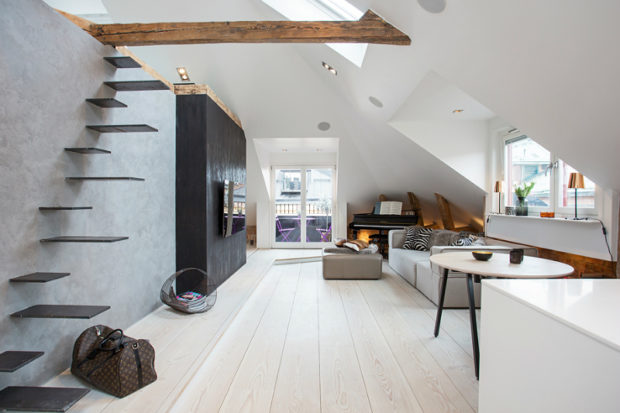The Current Home Decor Trend: Simplicity
It’s hard to find a home decor/design magazine or website these days that doesn’t contain a feature article about one of the all-time hottest trends in living: simplicity. It’s not just a topic of design, either. The simplicity theme, sometimes called “de-cluttering,” is cropping up everywhere and has become a major influence in home decor and design. Here’s a quick summary of four ways the current style is already having an impact on the homes we live in.


Less is More
The old rule of thumb about how to fill a room with appropriate furniture is long gone. The new idea when it comes to furnishing a home is “less is more.” Some home buyers are even making a decision to leave at least one room completely unfurnished. The empty room becomes an adaptable area of the home that can quickly be turned into a guest room, party space, or art studio on an ad hoc basis.
Artwork That Works
The undercurrent of simplicity as a theme has found expression in art as well. Take a look at the top home decor publications and note what kinds of art are featured. You’ll see large doses of very simple, two- and three-color abstract paintings, many of which are either non-representational or some form of landscape art. Even sculptures in modern homes tend to feature smooth, long lines and forms that are neither invasive nor abrupt. Reworked drift wood planks and elongated metallic orbs are par for the course.
Clutter is the Enemy
As previously mentioned, one of the main sub-trends within the simplicity movement is “de-cluttering.” In fact, the removal of household clutter has become something of a mission for some designers. The new gurus of clutter-free focus on helpful tips for making homes leaner and cleaner, including:
- Remove kitchen cabinets of all expired food items and any appliance you haven’t used in the past year.
- De-clutter and organize every closet in your house by donating unwanted clothing to local charities and throwing out junk that has built up over the years.
- Have a garage sale twice per year to unload bulky items that don’t ship well and are easy to sell, like old bicycles and large appliances.
- Walk around the outside of your home once per week in search of lawn tools and bags of leaves that should be put into the trash or stored elsewhere.
- Do a basement purge twice per year. This is where so much unnecessary junk accumulates.
Smaller is Better
For the past several years, real estate agents have been noticing a surprising trend, that their smaller properties are much more popular with buyers than the standard two- and three-bedroom homes. One driving force behind this new trend toward small is the preference for simplicity in all things. Young married couples, for example, now prize bungalows and “zero-bedroom,” tiny homes that allow for creative interior design and have garage space that can be converted into a sleeping area. Young buyers are gravitating to extra-small homes in order to make their dollars stretch further. A bonus for buyers of tiny homes: small houses cost much less to heat, cool, remodel and maintain.